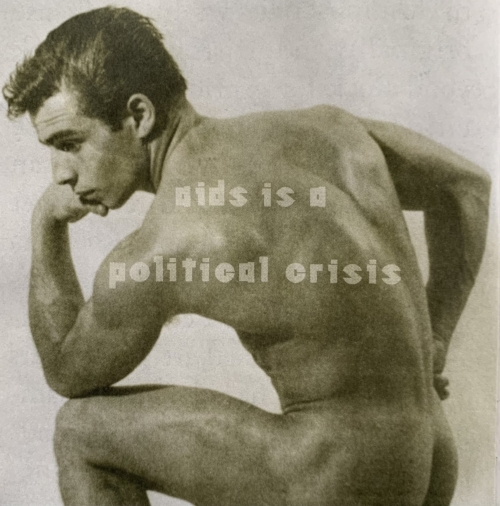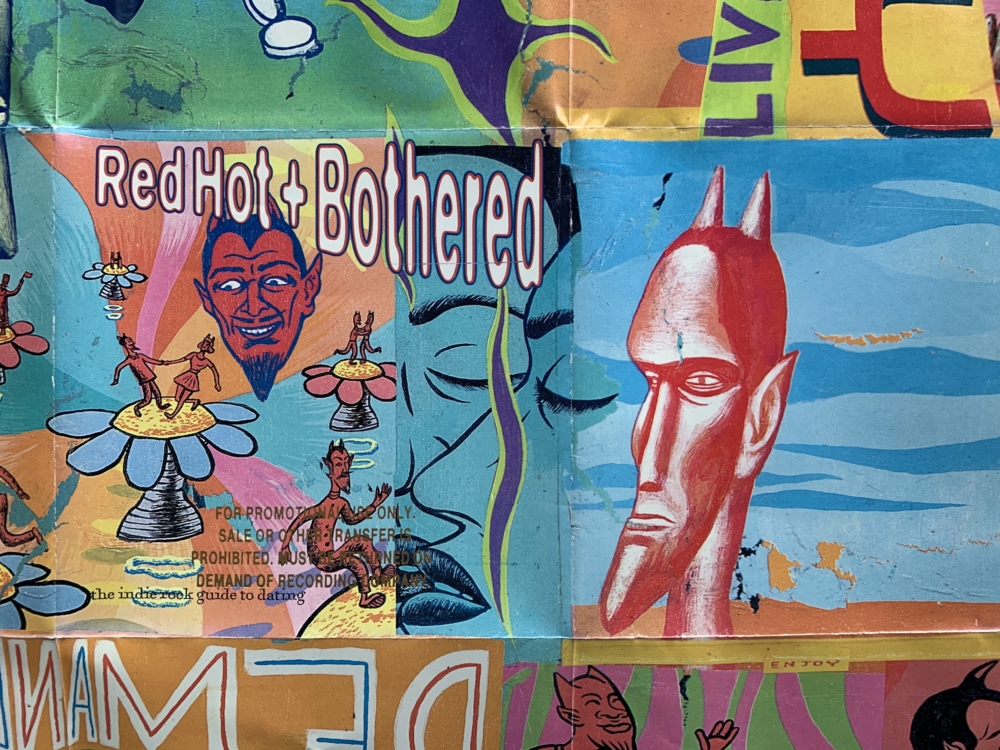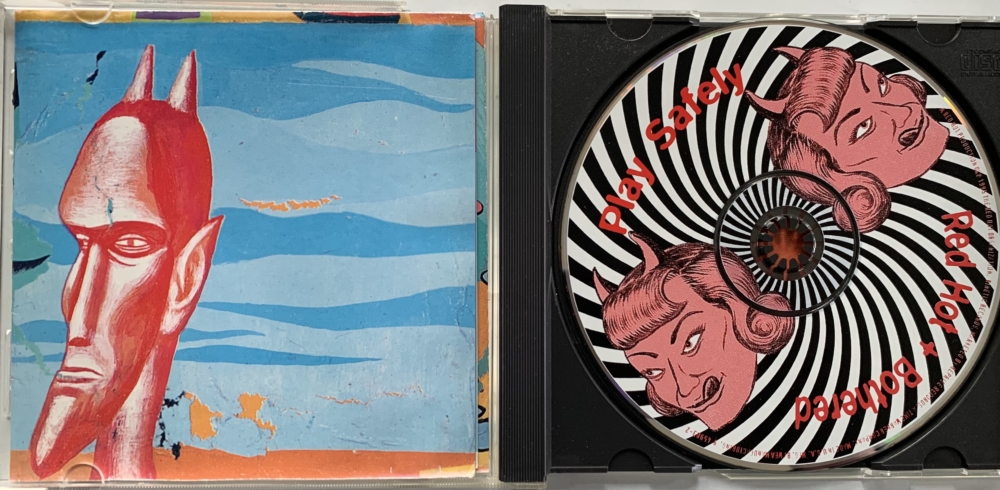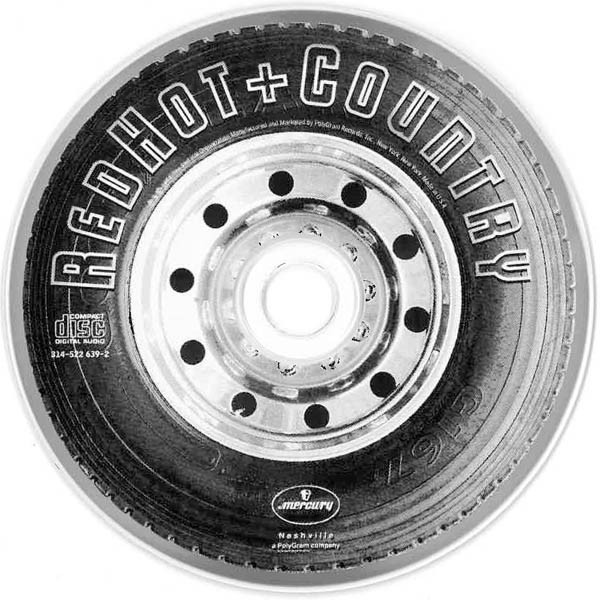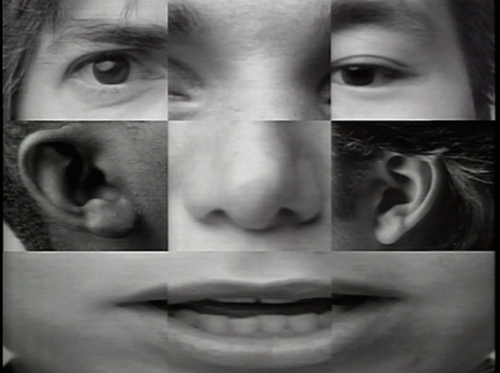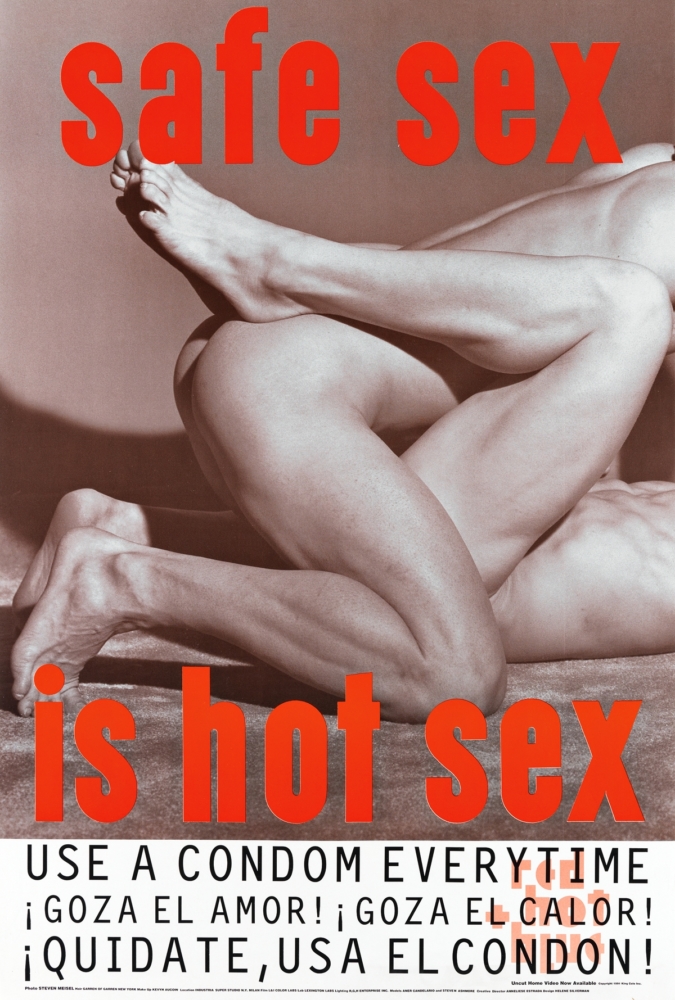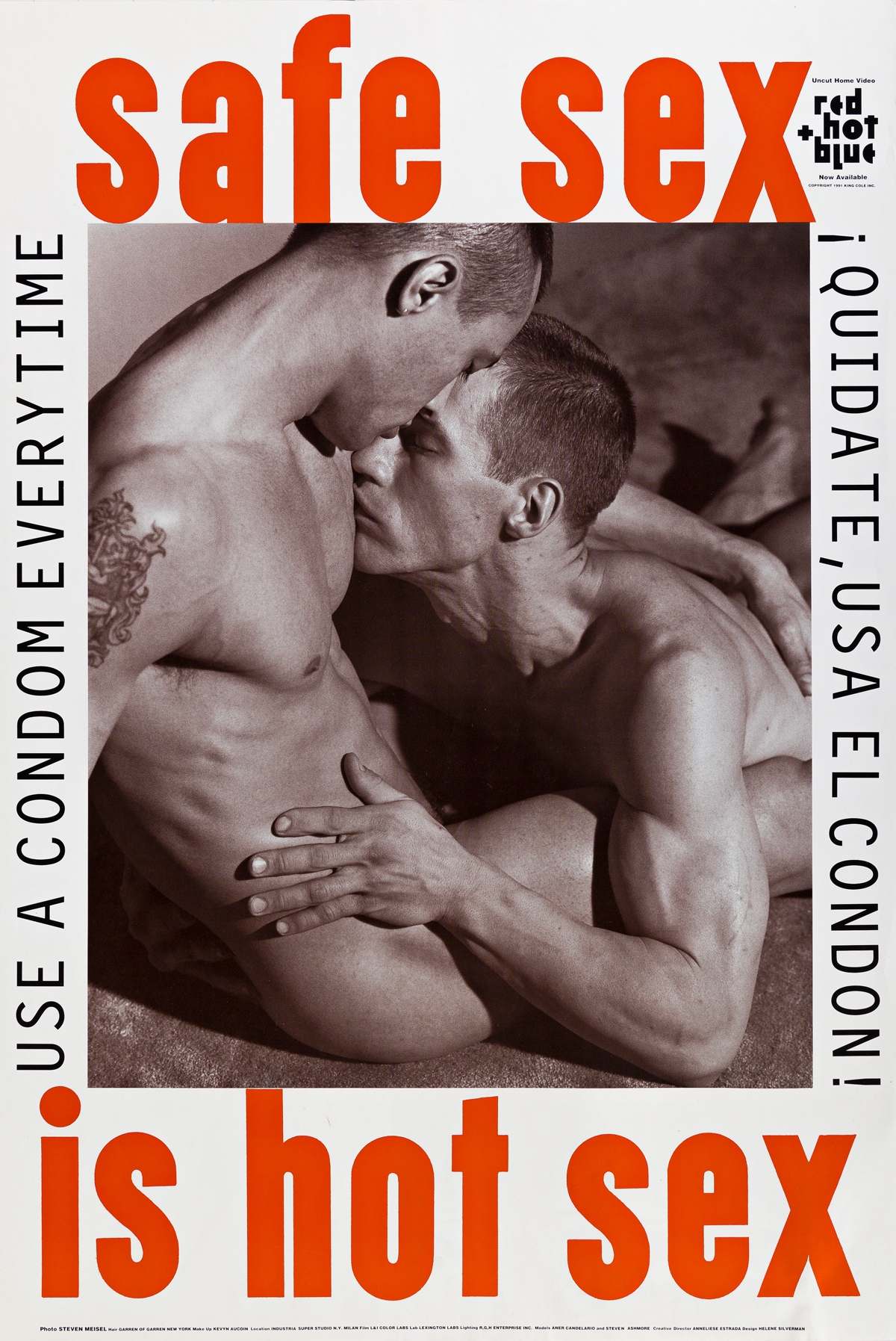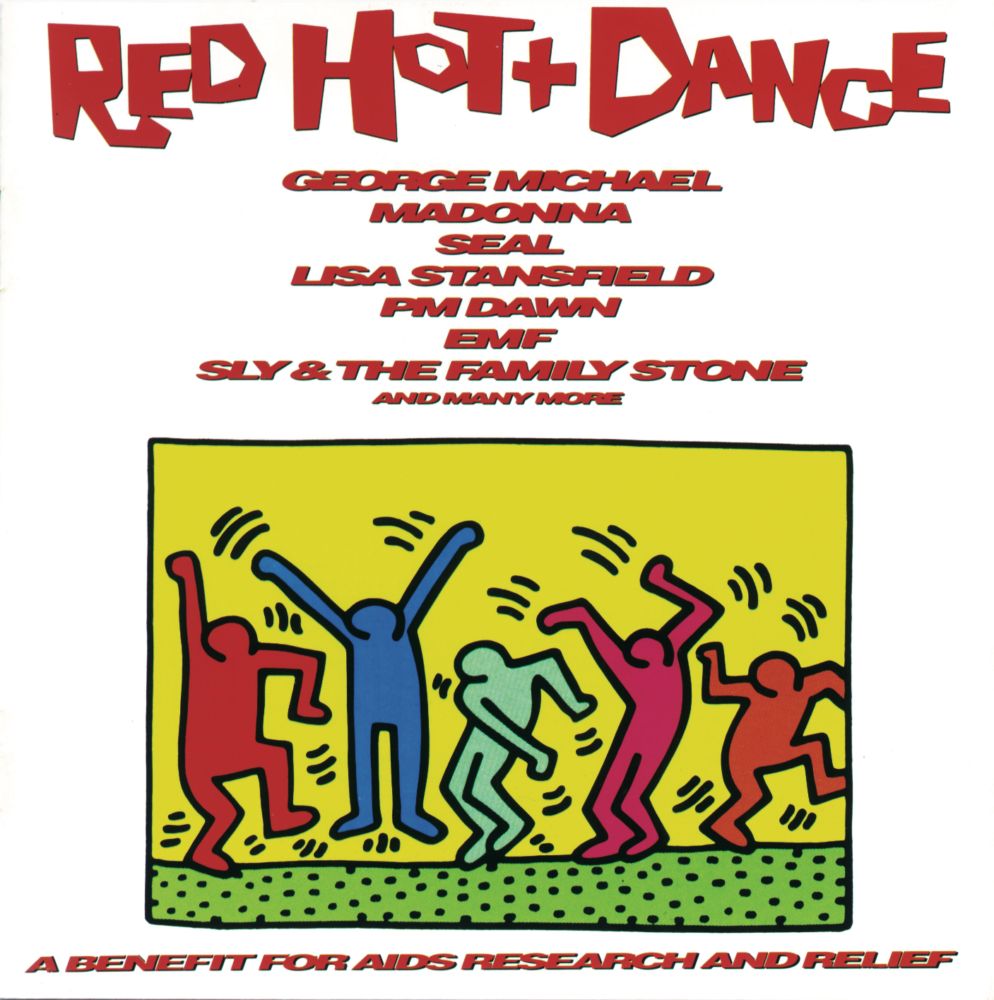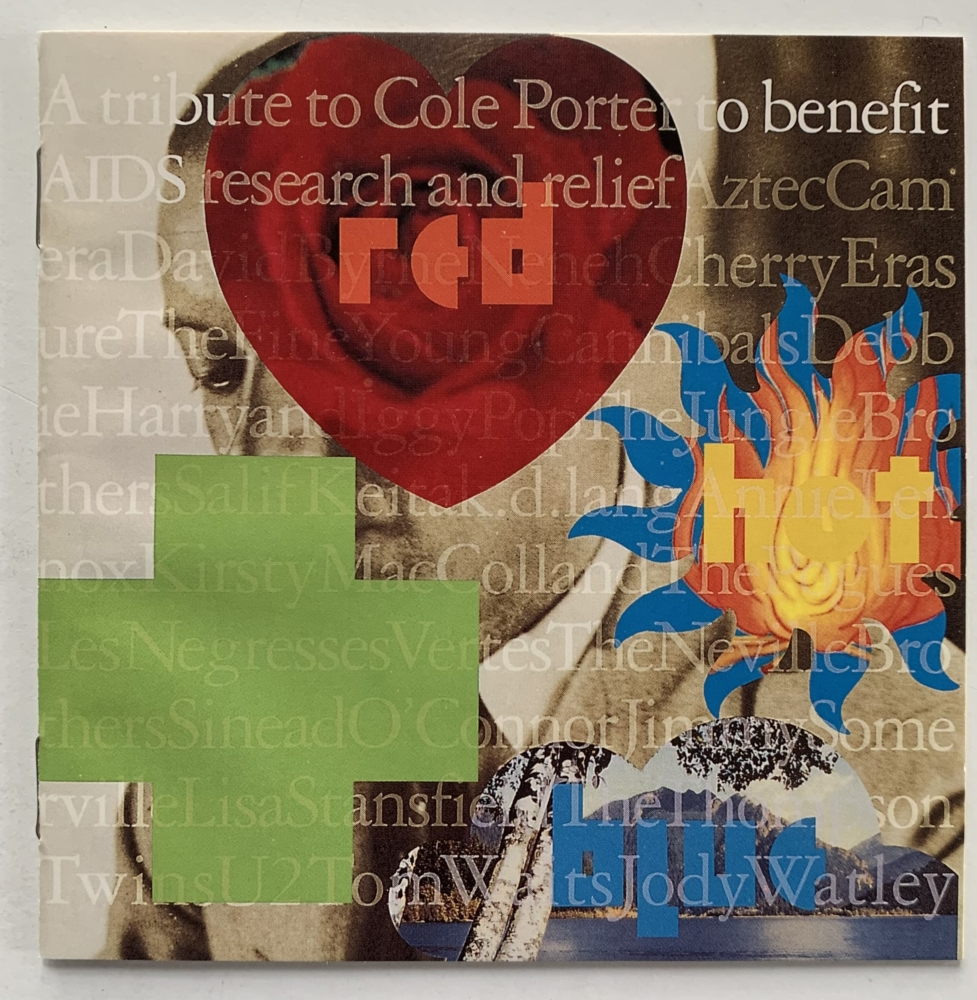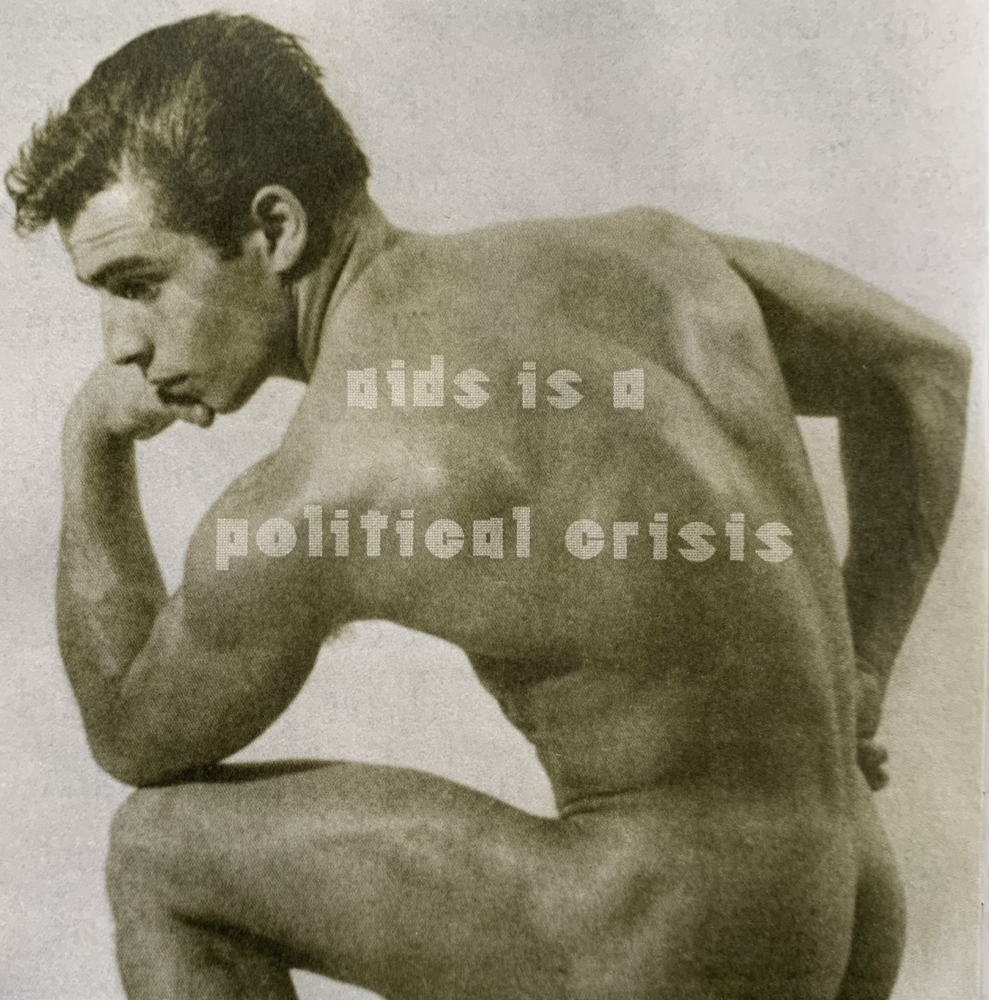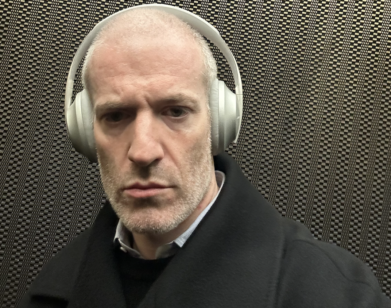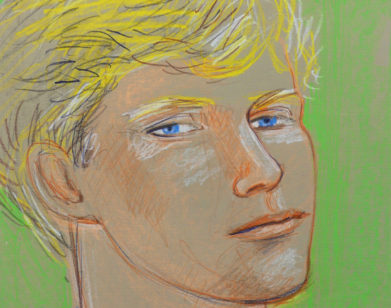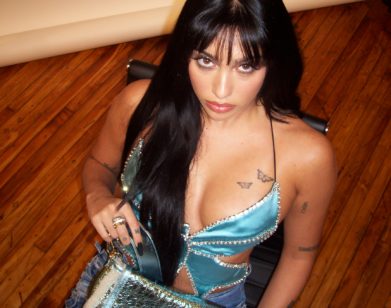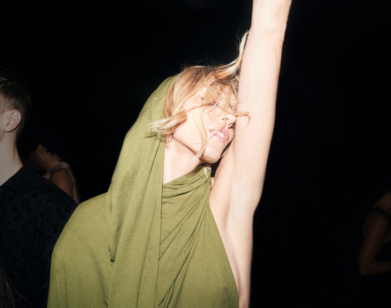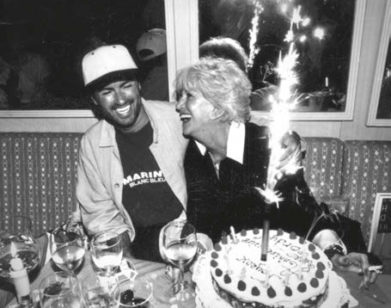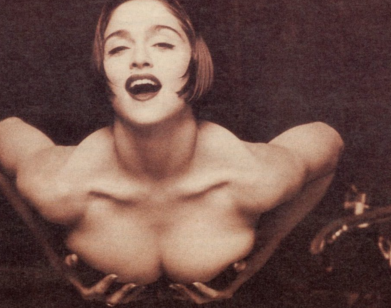AIDS Awareness Month
All About Red Hot, the Organization That Brought Together George Michael, Cole Porter, and Madonna
In 1990, the organization Red Hot released Red Hot + Blue, the first seminal compilation album featuring the music of Cole Porter, one of the great American songwriters of the early 20th century, reimagined by contemporary artists. The multimedia charitable project featured work by the era’s most beloved names in entertainment, from Neneh Cherry to Debbie Harry, Iggy Pop to David Byrne, Keith Haring to Jean Paul Gaultier. The money raised from the project helped fund organizations like Larry Kramer’s ACT UP and Treatment Action Group (TAG), which fought the AIDS crisis during its dire peak. As part of the 30th anniversary of Red Hot + Blue‘s release, the organization has released special edition vinyls (as well as digital editions) of their compilations, along with t-shirts from the ’90s that include designs by Jenny Holzer and David Wojnarowicz. This is Red Hot‘s effort not only to celebrate their legacy, but to share their knowledge on how to survive during a public health crisis that has brought forth wide-scale alienation, denial, and cruelty. Below, the organization’s co-founder John Carlin speaks with Interview about the impact of music, the evolution of LGBTQ rights, and how masks are the new condoms.
———
ERNESTO MACIAS: Here we are, at another history-defining moment. To be quite honest with you, I’m 27-years-old—I learned about Red Hot very recently. I would like to hear you explain what Red Hot was, and what it has evolved into.
JOHN CARLIN: That’s fair. I’m familiar with doing that because you’re basically the age of most of the people I work with—which has always been very important. Part of what’s kept Red Hot going for 30 years is constantly reinventing itself and working with younger people to define what it does in terms of their reality, their perspective. Last year we did two EPs, one with people your age. One was about and for young women in Nigeria—Nigerian musicians addressing the current situation for young women in Nigeria, both in terms of HIV infection, which is incredibly high, and violence against women. The other EP was in Taiwan that was supporting marriage equality—Taiwan was the first country in Asia that legalized same-sex marriage.
Red Hot began when I was in the New York art world in the ’80s, and I was good friends with some amazing artists including David Wojnarowicz and Keith Haring. When both of them became sick, it really sensitized me to the issue of AIDS/HIV and the corollary of what’s now called LGBTQ rights. So I became really aware of that.
In 1989-1990, AIDS was very much like what the COVID pandemic is today, particularly in New York. Because you might say, “Oh, AIDS is not on the same scale as COVID.” But in downtown New York, it was maybe even worse, because people were getting sick and dying all the time. It created this incredible sense of fear and anxiety—it literally changed the culture almost overnight from something really joyous and affirmative to something really dark and negative. What really motivated me to actually do this push on the 30th anniversary of Red Hot is that I think masks today are a lot like what condoms were back then. Before the early ’90s, condoms were a form of birth control. When I mentioned that to the young people that I work with, they were like, “What do you mean?”
MACIAS: In the 80’s, condoms weren’t being handed out at bars and parades and clinics. It was a different cultural context.
CARLIN: We’re at a very similar place around masks, sadly. Masks became politicized, but in some ways, condoms were back then too. I mean, some people were just in denial, really. “Oh, I don’t like wearing condoms. They’re uncomfortable. It’s kind of dorky to interrupt the flow.” I know your generation–you’re a little bit more like a PrEP generation—so things have changed again. But in the ’90s, if you went to a party or you were in college, they just handed out condoms how they do today, or how they will be doing with masks.
Once you get that, it brings in why music and pop culture can be so powerful, and again, how Leigh and I came up with this formula for what became Red Hot + Blue. How do you change people’s behaviors? If you go back to the ’80s and the ’90s, Ronald Reagan, who was the president at the time, never mentioned the word AIDS—the way Trump is with COVID today. So we really thought that if you want to change behavior, particularly among young people, music is a great way to do it. Again, this is a time that predates your consciousness. The dominant youth culture brand at the time was MTV, so in a way, MTV was like Instagram and TikTok combined.
MACIAS: It’s such an interesting parallel that you are making. I’ve thought about it in many ways, and personally, I can only make assumptions and imagine what it must’ve been like compared to today.
CARLIN: Part of the craziness of HIV and COVID are, people politicize it. Some people were literally like, “HIV is a good thing because it’s killing all the people we don’t like.” The really important thing that AIDS activists like Larry Kramer and Act Up did was, they took their healthcare into their own hands. They didn’t wait for the government. They didn’t wait for the medical professionals, for pharma to come up with the right drugs, they advocated for their own health. That is a lesson that is of incredible importance. When Larry Kramer died this year, there was a quote from Dr. Fauci who was around back then: “Larry Kramer is bigger than gay rights, he’s bigger than HIV.” He is the person that really started this kind of movement where you have to take control of your own healthcare. So we’re going to get some of the popular musicians, U2, Sinead O’Connor, David Byrne, and we’re going to educate. The goal was really to persuade people who were difficult to reach. Because one of the problems with activism is people tend to only talk to people that agree with them. That’s why it’s really think gotten worse in the social media era is that, we all kind of live in these bubbles. It’s harder and harder to reach people that don’t agree with you.
MACIAS: Speaking of your trojan horse approach—trying to educate and impact culture without doing it directly—now we’re in a time where activism goes hand-in-hand with music or with being a celebrity. Does it strike you that there’s still a need for organizations like Red Hot to advocate for these issues through music?
CARLIN: I think there’s a need. I think it’s more difficult to do, because of this fragmentation and automatization of popular culture. The reason I said that the problem with social media is how the algorithms are designed. Use Facebook, Instagram as an example—they make their money by creating addiction and strong reactions. That makes it really difficult for activism and for music, frankly. Back in the ’90s when we did Red Hot, there was a middle-class—there were all these great artists who maybe weren’t the most popular, but they had solid careers and they could be kind of artistic and creative. Today, it’s really like, there’s a 1% of Taylor Swift’s and Drake’s and Beyonce’s, and then everybody else is poor. That’s problematic, because you’re like, “Okay, well. That’s not enough.” Look, I love Drake and Beyonce.
As we evolved from Red Hot + Blue into other projects—in the mid-’90s, we were doing hip hop projects, like Stolen Moments and America is Dying Slowly, at the same time as we were doing country music projects. Lots of people always ask me, “How could you do them both at the same time?” I’m like, “Well, those are the two most homophobic communities in America.” They’re not keeping themselves safe. They’re not protecting themselves because they’re in denial.
MACIAS: And those are the communities we should be looking out for and protecting.
CARLIN: You have to try to talk to the people who don’t agree with you. The country music album we made was a commercial failure because country music radio would not play it and at the time radio was everything. I think they wouldn’t play it because it was an AIDS benefit. We made a TV show for Country Music Television, the MTV of country music, the first documentary where people in the American South were interviewed about HIV and LGBTQ rights, and people did not like that.
MACIAS: I’m from Texas, and that mentality still prevails. How much pushback did you receive?
CARLIN: “Why are you doing this? We don’t have any gay people.” “You mean you suppressed the gay people in your culture or drove them to San Francisco or New York.” Red Hot and country really began because some of the female country music stars became sensitized to age because their hairdressers and stylist got sick. Now, you can imagine that.
MACIAS: Oh, wow.
CARLIN: I always have to pay tribute and credit to David Byrne. David Byrne was the first artist to say yes to Red Hot. 500 artists later, the first one is always the most important. One of the main reasons that David Byrne said yes—it was a secret at the time, but now it’s public—his sister-in-law was HIV-positive, and pretty soon thereafter died of AIDS. She was a very famous woman named Tina Chow, a gorgeous woman who was a jewelry designer and she was married to a restaurateur who ran a restaurant called Mr. Chow’s.
People tend not to take these things seriously until someone they know is affected. I think it’s the same with COVID.
MACIAS: I wanted to ask you if you could share insight on a couple of these images. What about these naked bodies urging you to use a condom?
CARLIN: I do think it’s interesting to look at them today and understand their historical context. So after Red Hot + Blue became successful, we realized that the main mission of Red Hot was kind of like a propaganda organization. In fact, our primary charitable mission is to raise awareness. So those posters were really part of a campaign, as opposed to say the albums that we did before and after, that actually helped to raise money and reach people in a different way. Those images were generously created and donated by Steven Meisel. Leigh and I created that through a woman who was very active in the design world at the time named Anneliese Estrada. She was “married to Angel Estrada” who was an important gay designer in that era, who died of AIDS. So she became very sensitized to the issue. She was part of DIFFA; she was kind of a person in the fashion world. We paid to have them pasted around a number of cities around the country.
MACIAS: I found it interesting that they were in Spanish also, not only in English. I mean, that was obviously a decision, right?
CARLIN: There was a time and again, I’ll talk to your generation, where political correctness was actually a good term. It was something you would strive for, not as some weird marginal liberal behavioral thing. It was about being as diverse and abrasive as possible. Red Hot + Blue has an African artist on it; now that wasn’t going to help record sales. Almost nobody knew who Salif Keita was at the time, but it was important. In the same way on the posters, it was important to include the Spanish-speaking communities in the world. That was part of it.
I think when I look at those posters now, as someone who sort of came out of the art world and taught art history, and I didn’t really understand this at the time, but what Steven Meisel did was so brilliant. He made these sexy photos of couples, primarily same-sex couples, look classical. He made them look clean. Because at the time, gay sex was furtive and something to be ashamed of.
MACIAS: It was dirty.
CARLIN: Always done in the dark. These were much like Greek statutes.
MACIAS: They look very intimate.
CARLIN: Love is beautiful. Intimacy is beautiful. Defining it in terms of your sexual orientation is just nuts.
MACIAS: This is why I think images are so important, as well as the names associated with a movement. For example, this Red Hot + Dance album cover with George Michael, Madonna, Seal, Sly & the Family Stone—can you tell me a little bit about that?
CARLIN: I mean this sort of all began because people like Keith Haring, who was a pop-cultural figure as much as a lot of those musicians, died. He actually was dead by the time that came out in 1992. It was a celebration of his life. So when Leigh and I did Red Hot + Blue, we thought it was a one-off. We never thought it would be as successful as it was. It almost killed us doing it, and in a way we were like, “Oh, thank god we did it. Let’s get on with our lives.” Out of the blue, we got a call from George Michaels’s manager, Andy Stephens. He literally said, “George wants to donate a single to Red Hot.” He loved Red Hot. Going back to this other theme, Red Hot is both about HIV AIDS, but also about LGBTQ rights. I don’t think people your age really understand that at that time George Michael was in the closet. It’s hard to believe, right?
That’s partly why we chose Cole Porter for Red Hot + Blue. Cole was one of the great gay artists in early 20th century American art and he was married and closeted. That was something actually very brave of George Michael to do, to be the lead on a major world AIDS benefit and donate a song that became a global smash. He also wrote a song on that album, which nobody ever paid attention to, which frustrated me. It was called “Do You Really Want to Know?” It’s a very powerful song about being tested. People that you probably grew up with in Texas are not really that interested in the artwork world, but they go out to clubs and dance. That was important.

